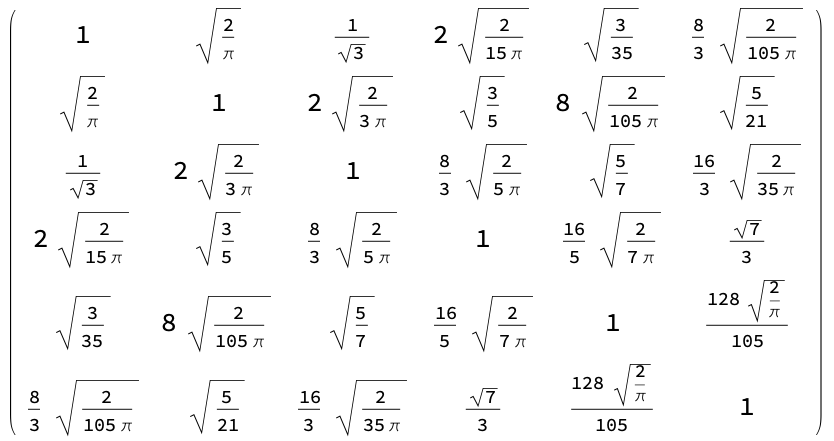This question is a continuation of my previous series of questions about basis functions.
I would like to find the minimum energy of Coulomb potential motion using matrix method.
$H=-\frac{1}{2}\Delta-\frac{1}{r}$
I have chosen Slater Type Orbitals as a basis functions $R(r)=Nr^{n-1}e^{-r}$ ,$ \quad n = 1, 2, 3, 4, 5...$ (formula 11.2.2 from here https://chem.libretexts.org/Courses/Pacific_Union_College/Quantum_Chemistry/11%3A_Computational_Quantum_Chemistry/11.02%3A_Gaussian_Basis_Sets )
The answer is known from the general theory ($E_{min} = -0.5$)
My Wolfram Mathematica code give the next values:
$E_{min} = -0.874888131489401$ - 5 basis functions
$E_{min} = -1.7871262624523565$ - 10 basis functions
$E_{min} = -2.407853444926228$ - 15 basis functions
$E_{min} = -2.858626490878647$ - 20 basis functions
The increase in basis functions number gives increase in the absolute value of the energy and it is so far from -0.5. But with increase of the basis functions number, the energy value should get closer to the correct value. What have I done wrong?
The code:
ClearAll["Global`*"]
nmax = 5;
Psi1[r_, n_] := r^(n - 1) Exp[-1*r^2];
NN[n_] :=
1/Sqrt[Integrate[Psi1[r, n]*Psi1[r, n]*r^2, {r, 0, Infinity}]];
Psi[r_, n_] := NN[n]*r^(n - 1) Exp[-1*r^2];
(*kinetic energy*)
Kk[r_, n1_, n2_] :=
FullSimplify[
Psi[r, n2]*
Laplacian[Psi[r, n1], {r, \[Theta], \[Phi]}, "Spherical"]];
Kx[n1_, n2_] := -0.5*Integrate[Kk[r, n1, n2]*r^2, {r, 0, \[Infinity]}];
KK = Table[Kx[n1, n2], {n1, 1, nmax}, {n2, 1, nmax}];
(*potential energy*)
VP1[r_] := -1/r;
Px1[n1_, n2_] :=
Integrate[Psi[r, n2]*VP1[r]*Psi[r, n1]*r^2, {r, 0, \[Infinity]}];
PP = Table[Px1[n1, n2], {n1, 1, nmax}, {n2, 1, nmax}];
Coulomb = Min[Eigenvalues[KK + PP]]
Out[2009]= -0.874888

